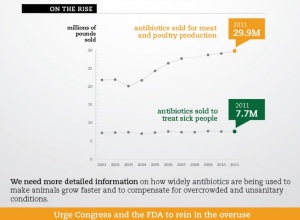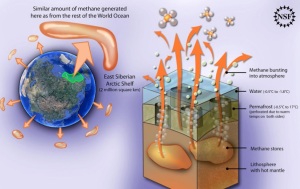A recent series titled Food for Thought on the Huffington Post blog explored some common secrets of GMO’s that are worth sharing.
I have posted them below and also added to them in my own words.
1. Don’t mention the food waste: “We need this technology to feed to world,” is the marketing cry of the big chemical companies. In truth, they do need this technology to feed the expectations of shareholders, but it turns out that more than one-third of the food produced in the world goes to waste. That amounts to 1.3 billion tons every year, costing us economically. In this country alone, we throw away 96 billion pounds of food every year, or 27 percent of the total amount of available food. That’s 3,000 pounds of food a second. With the United Nations on record saying that we need more than just genetically engineered food tools in the toolbox, it appears what we also need is a smarter distribution model to address this waste.
2. It’s Big Razor’s playbook: Gillette will practically give away the razor to get people hooked on buying the razor blade. It’s a smart strategy for chemical companies, too. They offer the genetically engineered seed at a discount, then get farmers on the hook for buying the chemicals and suite of chemical products required to make their seeds grow. Pesticide application is up 527 million pounds since the introduction of these genetically engineered crops.
FYI…did you know that by using your regular inexpensive hair conditioner to shave your legs (woman) or face (men) that your razor will stay sharp 50% longer than buying shaving cream? TRUTH. Shaving cream actually dulls the blades faster so instead of buying another product to shave with…often a more expensive product, simply use what you already have. Your conditioner. Additionally, the more ingredients in your shampoo and conditioner the worse it is for your body and scalp. Remember, what you rub on your skin or scalp does enter the bloodstream. SAVE SOME MONEY.
3. EPA now regulates this genetically engineered corn as a pesticide. Seriously, if you had the choice on your kitchen table or at a BBQ between a corn regulated by the EPA as a pesticide and one that wasn’t, which would you choose? No brainer. We should know which one is the pesticide and which foods it is going into.
4. Pre-treated seeds doused in chemicals: It’s called an accelerating agent, and seeds are pretreated before they are ever even put in the ground. Is it any wonder that farmers using these seeds are increasingly worried about what it is doing to the quality of their soil? Monsanto owns almost all the Patents with regard to plant stress. They own 90% of all the genetically modified seeds on the planet and will eventually control the nations food supply. They own drought tolerant seeds that grow with less water and they are are now monitoring the farmers grow data. See Blog Titled https://empoweringconsumers.wordpress.com/2014/01/03/monsantos-recent-move-to-control-farm-data/
5. Pouring on the Pesticides: The latest analysis shows that genetically engineered crops have driven up overall pesticide use across the country, contributing to a 527 million pound increase in herbicide use between 1996 and 2011. And last year alone, genetically engineered crops used 20 percent more pesticides on average than non-GE crops. Who pays for that? Farmers and the people that eat them. Who benefits? The chemical companies selling the seeds engineered to withstand these increasing doses. It goes straight to the bottom line and into the bank. Not only are the chemicals a danger, but the antibiotics in our food have increased dramatically as well.
6. Patent the Chemicals as a Drug: The increasingly controversial weed killer, glyphosate, has been patented an antibiotic: Who knew that the patent had been filed? Apparently the US Patent and Trademark Office. As a growing number of farmers express concern over what this chemical is doing to their soil as headlines around the world express concern over what it is doing to humans, you have to ask yourself: given the 21st century technology we have today, is it time to make this 20thcentury, chemically intensive operating system, obsolete?
FYI – you can buy distilled white Vinegar for about $2.29 per gallon and add 20% water and use it to spray on your weeds with no harm to the soil. The weed killer Monsanto sells at your local hardware store costs $25.00 and is toxic. SAVE SOME MONEY.
7. Patents protect intellectual property: “The development of genetic engineering of plants in the 1980s was accompanied by a sequence of increasingly specific confirmations of the patentability of various types of life forms, provided that they met the standard patent criteria of novelty, utility and nonobviousness.” Nonobviousness is pretty discreet. So let’s say a pediatric cancer or autism group wanted to study if these crops and chemicals are contributing to the rates of cancer or autism. They’d have to go to Monsanto or the other big chemical companies for permission. It’s worth considering that just as Big Tobacco did before it, these chemical companies just might possibly be relying upon concealment of its documents from the public under intellectual property law to avoid liabilities and to evade regulation.
8. Technology Stewardship Agreements lock farmers into contracts for genetically engineered seeds. Want to break the contract? They’ll sue you. A farmer in Iowa is living testament to this happening. Once he realized that the details of that contract locked him into purchasing Monsanto’s suite of products for the life of the farm, it felt like a noose. When he wanted out, they made a point of showing the farming world that it wasn’t an option and sued. TRUTH…Monsanto is also involved with weather modification and as floods and storms wipe out small farmers, they buy the land and add it to their holdings. WATCH THE MOVIE HERE
9. Labels mean liability: Right now the companies using these genetically engineered foods want a ban on state labeling and are trying to stop a growing call for mandatory national labeling. Why? Because without labels, this “GMO Buyers Club” can claim that there is no evidence that these crops have ever caused any harm. And guess what? Without labels, they are right, there is no evidence. Labels would bring accountability, traceability and liability. It’s no wonder that the food industry is so allergic to labeling these genetically engineered ingredients in the United States. An allergic reaction to food sends someone to the ER once every three minutes.
Without labels on genetically engineered ingredients, the industry can claim “no evidence of harm.” Without labels, there is no traceability, accountability and liability. No way for these companies to be held accountable for the costs that they are externalizing onto society, our farmers, their farms and our economy. The food awakening is on, and the companies that are opting out of genetically engineered ingredients and willing to be transparent with the consumers are capturing market share.
I never like to tell people what to do, but I think it’s time to turn off “Dancing With The Stars” and begin learning how to farm our own food. This is the only way to ensure the quality of what we put in our bodies. As the poles continue to melt and the weather continues to accelerate, we will all be affected within the next 3-5 years. There are a lot of solutions out there if you know where to look.



